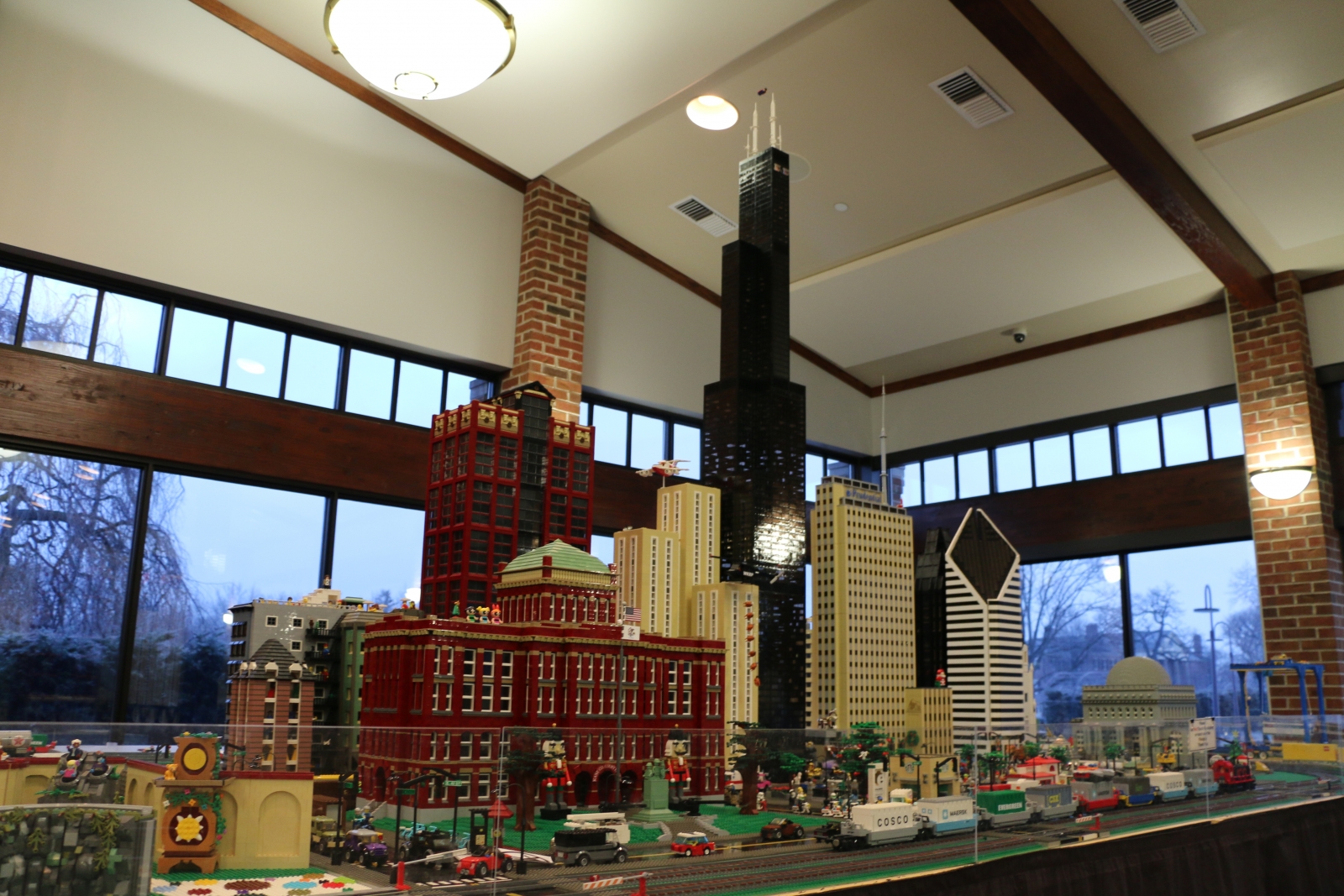
Where can you find a 15,000-brick Willis Tower, an 18th-century French chateau, Mister Rogers’s Neighborhood, and a Dog N Suds, all in the same place? Aside from the internet, your best bet is this weekend at the Cantigny Visitors Center in Wheaton, which since 2002 has been home to the LEGO Train Show, a two-day holiday display of miniatures and little locomotives handmade by the Northern Illinois LEGO Train Club. It’s the largest of six local events the 22-member club mounts per year.
Here, NILTC president Jamie LeBlanc, who has been involved with the Cantigny Train Show since its inception, talks about the enduring power of LEGO, how club members pick which landmarks to render, and the 21st century’s crisis of creativity.
Previous shows have included landmarks like Christkindlmarket, the Prudential Building, and the Aon Center. How does the club determine what will be represented each year?
If we’re looking to build something like a large building, or are looking toward historical aspects, there are many to choose from in Chicago. Unfortunately, when you decide to build something like a skyscraper, you’re looking at cost as well. [Willis Tower] is a very simple design, but when you start looking at the cost of 15,000 bricks, a lot of people in this club will say, “OK, this is a long-term project, not something I’m gonna do in the next three weeks for Cantigny.”
We always have one person who coordinates the show — for example, that Person A needs a 40-by-40 inch table, and Person B needs 120-by-60. Then, he’ll take all those various cohesive layouts that fit in that particular room. When individual members show up, they have however much space they asked for and an idea of how they want everything laid out.
Why is it important to have clubs like this for adults?
We pretty much all have full-time jobs; as much as we’d love to do this full-time, it just isn’t financially responsible to do so. It’s the very lucky person who has a job that is also their passion.
The LEGO club allows us to get together as a like-minded group and create. It’s really different when you create as an adult because you have discretionary income. As an adult, you can make whatever vision you have in your head come to fruition, which is really special.
There’s a lot of people who create stuff, then they throw it online and get all sorts of kudos. That’s great, don’t get me wrong. But because the club is out there actually doing shows, we have the opportunity to take something we’ve created, put it in front of an audience, and get immediate feedback from somebody standing across the table from us. Even if they don’t address us, you see people walking by smiling, laughing, and pointing at stuff you did — it’s that feeling. You can’t walk away from there without feeling an immense sense of satisfaction.

What is it about LEGO that’s made it so timeless?
You can build a spaceship and play with it for a while, but when you get bored with that, you can tear the spaceship down and make a boat. Or you could make a castle. Or a downtown. Whatever your imagination could whip up, you could pretty much build with LEGOs.
What do you hope kids take away from the show?
When we grew up, it was all about what your mind could do, whether it be TV, a movie, a book you read, or just something crazy out of your head. It seems like with all the video games and other media that are so realistic, that sense of imagination is no longer there. We really try to promote this idea that kids can do this and encourage them to break out on their own.
Sometimes parents [ask], “Well, what do you suggest? How do they start?” I say, “Go home and have him build your house out of LEGO. He knows your house; he lives in it.” Kids can learn from instructions, but they shouldn’t be the limiting factor of how they build or create.


